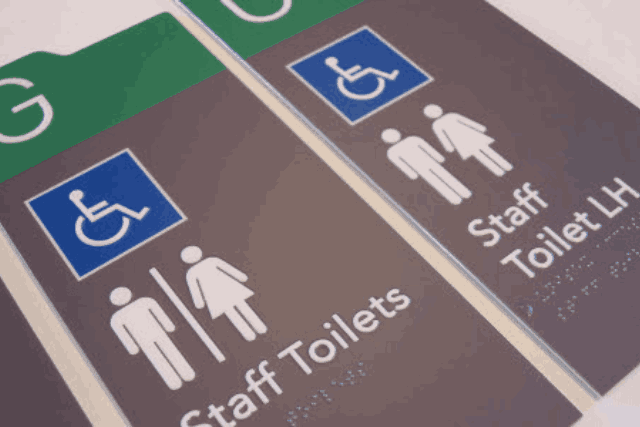
Technological advancements have continually paved the way for improving the lives of those with disabilities. A standout example is the integration of Braille in public transportation, a game-changer for the mobility of visually impaired seniors in Australia.
The Current State of Vision Impairment in Australia
The Current State of Vision Impairment in Australia
Recent estimates show that around 453,000 Australians are blind or have low vision, and approximately 70% of them are aged 65 and over. Vision Australia projects this number could rise to 564,000 by 2030.
Vision 2020 Australia estimates that around 575,000 Australians currently live with blindness or vision impairment—including over 66,000 who are completely blind—with over 70% aged above 65.
The Australian Bureau of Statistics (2022 SDAC) reported that 5.5 million Australians (21.4%) have a disability, with 52.3% of those aged 65+ suffering from some form of disability. Among older adults, about 444,400 people aged 55+ are visually impaired—roughly 9.4% of that demographic.
Accessibility Challenges in Public Transportation
Imagine being 70-year-old Mrs. Thompson, who has been visually impaired for the past decade. Every morning, she musters the courage to step out of her home, relying on her memory and limited senses to catch the bus to her local community centre.
The anxiety of identifying the right bus stop, deciphering the blurred signage, and understanding the complex route maps is a daily ordeal for her. For many older Australians like Mrs. Thompson, public transportation can pose significant challenges. Especially those with vision impairment.
These difficulties aren’t just about reading signs. They encompass the entire experience of commuting. It can range from identifying the correct bus stop or train station to understanding route maps.
Braille Solutions in Public Transportation
Braille, a tactile writing system for the visually impaired, has been progressively integrated into public transportation systems. Its incorporation serves as a beacon of independence and confidence for visually impaired commuters.
Here’s how Braille is making a difference:
1. Enhancing Mobility
This tactile writing system provides them with essential tools to navigate the complexities of modern transit. Across bus stops, train stations, and airport terminals, braille signs have become indispensable.
They offer crucial details such as station names, route specifics, and emergency instructions. With a simple touch, passengers can identify their routes, understand directions, and follow safety guidelines.
But the assistance goes beyond just basic signages. Detailed Braille guides offer a more in-depth understanding of station layouts. These guides describe the surroundings in detail, from entry and exit points to escalators, elevators, and restrooms.
Such comprehensive information ensures that visually impaired individuals have a clear picture of their environment. It’s making their commuting experience less daunting.
The culmination of these Braille initiatives has led to a significant enhancement in mobility for the visually impaired. They can now navigate public transportation with greater independence and confidence, underscoring the profound impact of Braille in creating a more inclusive transit system.
2. Facilitating Communication
Braille’s role in our transportation system extends beyond navigation. Transit authorities have recognized the importance of clear communication for visually impaired passengers.
To address this, they’ve introduced Braille information brochures. These brochures provide essential details, ensuring that passengers can access the information they need without hurdles.
Additionally, ticket machines have been equipped with Braille. This means that visually impaired individuals can now purchase tickets on their own, further enhancing their independence.
These steps, while seemingly simple, play a crucial role in making public transportation more accessible and user-friendly for everyone.
Accessibility’s Positive Impacts
The introduction of Braille in public transportation has had a profound impact on the lives of visually impaired seniors:
- Increased Independence — With Braille, visually impaired passengers can travel independently without relying on assistance from others.
- Enhanced Confidence — The ability to navigate the public transportation system independently also boosts confidence, which in turn improves overall quality of life.
- The Ripple Effect — Families and friends of visually impaired seniors find peace of mind knowing their loved ones can travel safely. Moreover, it reinforces the idea that everyone deserves equal access and opportunities.
The Future of Inclusive Transportation
The integration of Braille into our public transportation marks a significant step forward in our commitment to inclusivity. It’s a clear indication that we recognize the importance of ensuring that all individuals, regardless of their physical abilities, have equal access to public services.
This progress serves as a foundation for what’s to come. We envision a future where every senior and visually impaired individual can navigate our transportation systems with ease and confidence. It’s not just about adding tactile signs; it’s about creating an environment where everyone feels considered and included.
While Braille is a pivotal starting point, our journey towards a fully inclusive transportation system is far from over. It will require continuous efforts, innovations, and feedback from the community. But with each step, we move closer to a system that truly serves all members of our society.
As we continue on this path, we remain hopeful and committed to ensuring that our transportation systems reflect our values of equality and accessibility for all.
